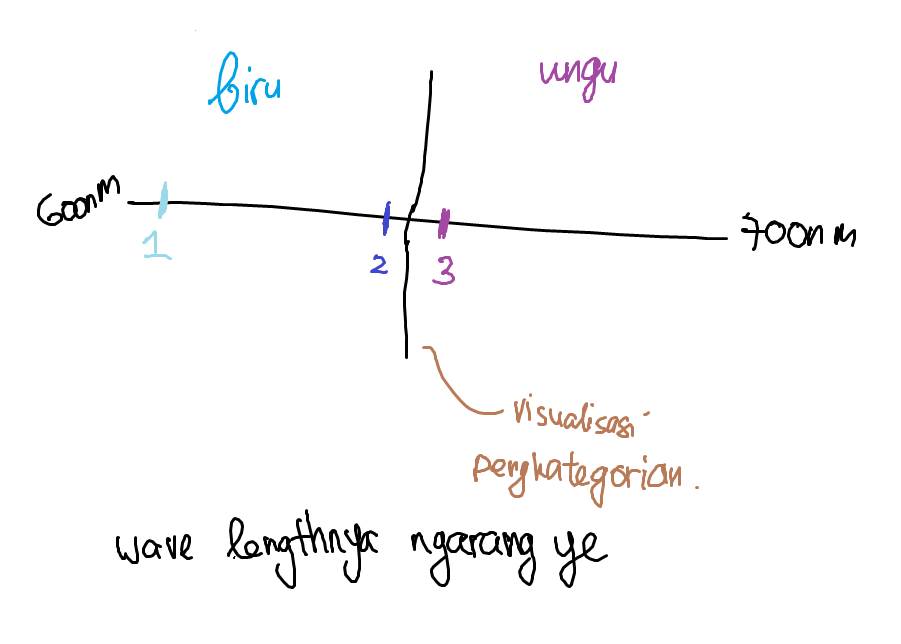#source/youtube#human-behaviorism#robert-sapolsky
💡 this course is about connection between your physiology and your behaviour, how those to affect one another (very deeply affect one another)
ada hal yang mau dihindari selama course ini, pertama kita acknowledge dulu suatu fakta.
fact about human mind,
we think in categories to make it easier for us comprehending all things around us.
rosoe orang autism kehilangan ability iki
keburukan e:
- we’re bad at differentiating things that falls on the same categories. i see only red misal, eventhought they are differ in shade
- kebalikan e juga berlaku, kita sangat buruk menyamakan hal yang falls on different kategori. contohe nilai 74 mbe 75. my mind precieve it with very different nilai, soale mreka di kategori yang berbeda.
- when we think in categories, we don’t see the big picture. i don’t really understand iki, jek gk dapet contoh seng enak ae
still keburukan, but in another words(but the same thing):
iki kata apik e,
- we underestimate how different two fact are when they fall in the same categories.
- we overestimate how different they are when there’s a boundries between the two fact, or in other word when they are in different categories
- when we think in categories, we don’t see the big picture. still don’t really understand,
contoh ketika kita menggunakan kategori untuk berpikir
(hruse seh kita selalu mikir dengan kategori, but im still gonna give contoh buat ngebantu nerima fakta ini)
ada masalah,well not really a problem. pokoke ada ayam jantan seng goyang2 opolah ngegoda wedok, trus ayam wedoke akhire teko. tros kon takok, kenapa wedok e teko?
kon isa njawab kek seorang
evolutionist, “soale seng gk teko endinge have less copies of their gene diterosno, makae yang tersisa cuman ayam wedok seng teko”
or kek neuro2 an “pas itu terjadi, ada hormon ini seng keluar dkk(i don’t really understand but you get the point lah)”
these are different categories.
kita kesulitan ngeliat bigger picture e seakan2 mereka berdua berbeda, tapi aslie mereka berdua sama-sama … (gatau kan jawabannya, jawaban ini tu bigger picturenya, dan bisa dibilang itu jawaban yg bener).
contoh keburukan pengkategorian warna
kek nek warna, kita kategoriin menjadi dua
biru mbe ungu,

warna no 1 dan 2 ada dalam 1 kategori
warna no 2 dan 3 ada dalam kategori yang berbeda
padahal menurut wavelength e, 2 lebih mirip 3 daripada mirip 1.
kita membedakan 2 dan 3, dan menyamakan 1 dengan 2.
ulangi ya,
kita terlalu menyamakan 1 dengan 2, padahal mereka jauh. ini terjadi karena mereka satu kategori
kita terlalu membedakan 2 dengan 3, padahal mereka deket. ini terjadi karena mereka beda katego
this course wil try avoid that categorizing habit(i don’t understand how)
why? because of all those problem. dan dosen e ngasih contoh that thinking in that way is very-very “phatologic”.
contohe “kasi aku anak apapun dan bakal tak atur lingkungane, dee bakal isa tak jadikno artis kek, pencuri kek, apalah”. iku quote pendiri e behaviorism kek e, dan iku seng terjadi nek kon bener2 berpikir dalam satu kategori.
aku masih gapaham bridging e 3 problem tadi ke contoh ini, but i do agree iki problem seng bisa terjadi nek kon terlalu terpaku sama kategorimu.
point2 lain
- this course will think that human are the same as other animals, we have the same physiology but we just use it differently, kek sama2 punya sapu tapi satue make iku gae pentungan.
- while doing that, kita bakal ask “why”, tros gunakan the easiest way to explain things yang kita(human) sudah punya(atau sudah tau, sudah developed pretty good), tros ask why lagi, and repeat
so kita bakal briefly learn about the things that we already know, the developed bucket/categories.(video2 laineee)
- tebakanku ae,
rosoe kita breakdown e kek berdasarkan waktu ngono, at least seem like it. kek “what happen 1 second before(misal neuron), what happen 5 minute before(misal hormon), what happen 10 bilion years before(misal evolution),…(aku gatau dimana endinge)